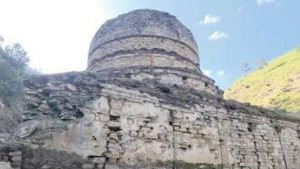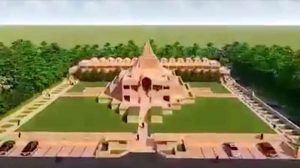
I don’t think it’s an accident that the Buddha reached enlightenment sitting under a tree. While we can practice mindfulness anywhere, at any time, we mustn’t forget the importance of the world in which we practice by inviting her in. In each moment we have the opportunity to come home to ourselves through mindful breathing. We also have the opportunity to come home to ourselves by reconnecting with the Earth. Whether sitting in a high rise or walking by the sea, we are always held by the Earth, supported by the Earth.
My teacher, Venerable Thich Nhat Hanh, has renamed prostrations “Touching the Earth.”* We usually enliven these full-bodied bows with guided meditations, but the simplest way to practice Touching the Earth is to be fully aware that we are on the Earth. “The Earth embraces us and helps us transform our ignorance, suffering, and despair. Wherever we are, we can bow down to receive its energy of stability and fearlessness. With this practice, we cultivate a relationship with the Earth and, in doing so, we restore our balance, our wholeness, and our peace.” (Nhat Hanh 2004, 2)
We needn’t wait to connect with the Earth in the formal practice of prostration. In whatever position we find ourselves, whether sitting, walking, lying, or standing, we can remember that the Earth, whether covered beneath concrete or not, is here for us and within us. I find this awareness alone is enough to begin to calm the mind and to release the many physical tensions that accumulate throughout the day.
We can connect with the Earth by practicing walking meditation outdoors. Taking time everyday to go outside—ideally in a park or a forest—has tremendous benefits, as seen by the increasing popularity of activities such as “forest bathing,”** and concerns about “nature-deficit disorder”—“a way to describe the psychological, physical, and cognitive costs of human alienation from nature, particularly for children in their vulnerable developing years.”*** Outdoor walking meditation can be as simple as bringing attention to the sensation of the feet as they make contact with the earth. Just like sitting meditation, whenever the mind wanders, we simply bring it back to awareness of the steps. But then we can also take on the instruction to “kiss the Earth” with each step. It’s still a practice of mindful awareness, but now it becomes infused with poetry, intimacy, and possibly even a sense of delight. Some days I need the calm focus of just the contact of each foot on the Earth. But other days, I need the uplift and enjoyment of kissing the Earth.
Water is life
Last winter, members of our community participated in an Interfaith Day of Prayer in support of the Standing Rock First Nation community, protesting the oil pipeline that threatens the drinking water of their community and disturbs their traditional burial grounds.**** They shared the mantra, “Water is life. Protect the sacred.” Even before the day of prayer, this phrase had worked itself into my consciousness. While my tradition already has a practice of bringing mindful awareness to the water we use when washing our hands, I started bowing to the sink every time I finished in the bathroom and simply saying, “Thank you water. Thank you life.”
Water is a part of the Earth and of our very bodies. Humans are composed of more than 70 per cent water. Without it, we will die in a matter of days. Thanking the water we use for drinking, cooking, cleaning, and bathing with a mindful moment of gratitude, hand over the heart or palms joined to make a lotus bud, is a very concrete and effective way to strengthen our connection with the Earth that is water. Intending to always say thanks to the water may be difficult to do all day long so it’s helpful to set one place or action where we can offer thanks and make a sign to help us remember. One needn’t thank anyone, in a theological sense, to still benefit from the act of thanking. It’s the attitude that counts, so feel free to find the words and gestures that resonate best with you.
The very air we breathe
Even more intimate than water is the air we breathe. Without the air, we cannot survive for more than a few minutes. Mindfulness practice normally instructs us to bring attention to the experience of breathing by focusing on the physical sensations in the nostrils or belly. This practice can be transformative on its own, as evidenced by the Buddha’s many teachings on mindful breathing. My teacher, Venerable Thich Nhat Hanh, also speaks of getting in touch with the wonders of life through mindfulness practice. I was recently inspired by a phrase from pastor and author Rob Bell: “That breath that you just took . . . that’s a gift.” While he is speaking of a gift from God, it’s also possible to tap into this sense of being gifted without a belief in a particular deity. To have lungs that can breathe and to live on a planet that has an atmosphere that sustains human life is already a gift. I bring this awareness into meditation practice by silently repeating, “This breath” with the inhalation and, “A gift” with the exhalation for a few minutes when starting a sit. It fills the meditation with a profound sense of gratitude, connecting with the vastness of the Earth that includes the air that embraces us.
For to focus on ourselves as individual beings, separate from each other and from the Earth that is our home, is the root of alienation and suffering. When we understand the inter-dependent nature of all phenomena, being that nothing is truly separate, we learn that we are the part of the Earth herself. Yes, we have specific lives and experiences, but there is no clear border that cuts us off from the living Earth. The atoms that make up the cells in our bodies were once soil, clouds turned into rain, the oxygen that trees exhaled, and infused with the energy of love and survival passed down from our ancestors. It’s easy for the teaching of non-self, or interbeing as we call it, to remain at an intellectual level and not bring us the transformation that the Buddha intended. Practices to connect us with our larger consciousness and our cosmic body, like Mother Earth, can help awaken us to the liberation we seek. But don’t take my word on this; try it out for yourself and see!
* Touching the Earth (Plum Village)
** Forest bathing’ is latest fitness trend to hit U.S. — ‘Where yoga was 30 years ago’ (The Washington Post)
*** No More “Nature-Deficit Disorder” (Psychology Today)
References
Nhat Hanh, Thich. 2004. Touching the Earth. Berkeley: Parallax Press.
Related features from Buddhistdoor Global
The Wild Geese of Buddha and Christ
Taking Refuge: Kaira Jewel Lingo
Love Letter to the Earth – Book Review
Related news from Buddhistdoor Global
One Earth Sangha Issues Buddhist Statement of Support for Standing Rock Protestors
Latest Well-being Trend Sees Urbanites Seek to Reconnect with Nature











